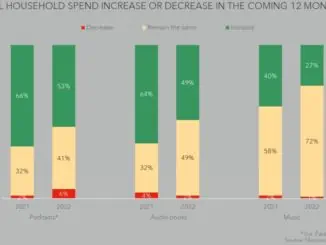
Media consumption set to increase 60% during COVID-19 crisis as more countries impose quarantine measures aimed at reducing the spread of the virus according to analysis from market analysts, Nielsen. Media consumption in the US is already at historical highs with Americans spending just under 12 hours each day with media platforms. During crisis events, such as snowstorms, hurricanes or a global pandemic, media users ramp up their media consumption to stay informed, kill time, find solace and stay in touch with others.
For example, in August 2017 when Hurricane Harvey hit Houston, Texas Nielsen found a 56% increase of Total TV Usage (TUT) compared with the preceding period and 40% higher than the period following the storm. Similarly, over the weekend of 23rd January 2016, a severe snowstorm dropped more than two feet of snow in the New York area, grinding activity in the market to a near halt. Comparing the Saturday of the snow event to the prior Saturday in the New York area, TUT usage was 45% higher. That same Saturday was also 49% higher than the Saturday following the blizzard.
Nielsen found that consumers gravitated to feature films, news and general format programming. The analysis also found a 61% increase in streaming via the TV. Consumers stayed warm indoors binging content, watching movies and keeping up with news from the outside.
In South Korea and Italy where the virus has had an early and significant impact TV usage has increased by 17% and 12% respectively and is likely to increase as the pandemic intensifies.
Remote and Home working
Many companies have moved to remote and home working in an attempt to drive down costs and the COVID-19 pandemic is only likely to accelerate this process. Nielsen data suggests that employees that work remotely during a typical Monday through Friday work schedule connect over three hours more each week with traditional TV than non-remote workers, 25 hours and 2 minutes to 21 hours and 56 minutes respectively. In terms of devices, remote workers also spend a higher amount of time each week on their tablets -over 4.5 hours compared to the 4 hours for non-remote workers. Beyond viewing, remote workers also lean into listening. The reach of radio for remote workers compared to non-remote associates is nearly identical both at just over 95%.




